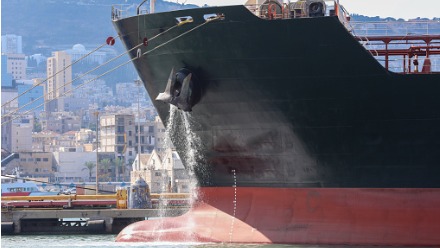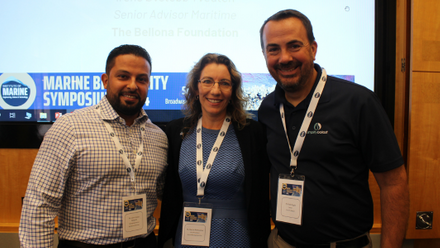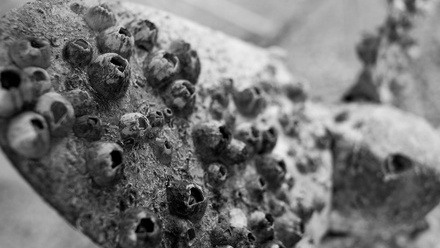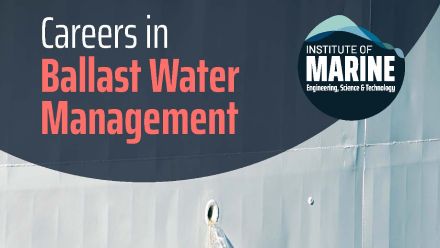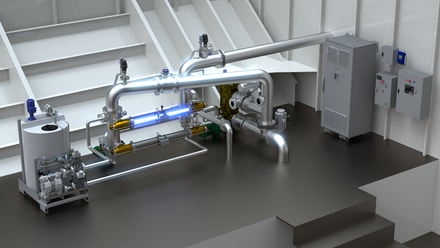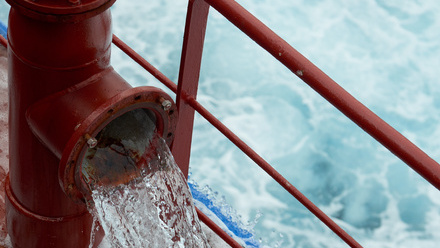Why we need clearer ballast water guidelines
An IMarEST-led event that gathered global experts concluded there’s a major lack of guidance and consistency in the performance of commissioning, testing and monitoring of ballast water management systems.
With the International Maritime Organization (IMO) International Ballast Water Management Convention coming into force, the number of vessels installing and commissioning ballast water management systems to meet their compliance dates has risen steeply over the past year. Every month, hundreds of ships are being built and retrofitted with ballast water management systems to ensure they comply.
The industry [is] still having to feel its way through the best ways of engaging with ballast water management methods, approvals, and testing.
The Ballast Water Management Convention aims to prevent the spread of harmful aquatic organisms via ballast water discharge, between marine environments. New ships have been required to comply with the standards since 2017, while existing ships have compliance dates phasing in through to 2024.
The convention is now fully in the ‘implementation phase’ with the industry still having to feel its way through the best ways of engaging with ballast water management methods, approvals and testing.
To explore the problems thrown up by these challenges, the IMarEST’s Ballast Water Compliance Monitoring Workshop held an online thought-gathering exercise earlier this year which brought together a broad range of marine stakeholders directly affected by the implications of the convention. These included ship owners, regulators, class societies, BWMS manufacturers, compliance monitoring device manufacturers, and testing facilities.
Ballast systems: daunting decisions
Choosing an effective ballast water management system can be a daunting task for a ship owner, as the chosen device’s success will depend to a great extent on a myriad of elements, including the size of ship, its ballast water pump capacity, and the characteristics of the waters it sails through. Added to this are the many different types of system available – from pressure vacuums to acoustic blasting – with the three most common types being ultraviolet radiation, electro-chlorination, and chemical injection.
And, before installation, all ballast water management systems have to be approved by the IMO, and the US Coast Guard if vessels they are installed on will deballast in US waters.

Credit: Shutterstock
Expert observations
Amongst many observations noted by participants in the IMarEST-led initiative was the need for much greater clarity on commissioning testing in order to help improve crew understanding – after handover by the ballast water management system’s manufacturer – of IMO statutory requirements, IBWMC issuance, and how to be prepared for biological performance testing.
The expert panel called for standardisation of what exactly is meant by ‘clean’ in terms of tank cleaning prior to commissioning a ballast water treatment system.
Call for clarity, not confusion
With official ballast water inspections taking several hours, delays in collecting suitable samples can prove costly. It is a burden that increases when inspectors and crew are unprepared for unplanned visits that hinder normal operations.
The experts agreed this could easily be helped with the introduction of clear guidelines for streamlining procedures that set out how crew can prepare to obtain a usable sample efficiently.
They also agreed that there is some degree of confusion caused by differing interpretations between classification societies, flag administrations and testing organisations. This confusion covered commissioning testing requirements and the distinction and use of indicative analysis and detailed analysis methods.
Looking to the future
The IMarEST Ballast Water Compliance Monitoring Workshop is continuing to consider developments in new standards and how well they work in practical terms, along with case studies of using compliance monitoring devices, and identifying possible improvements to testing procedures.
MEPC 75
Meanwhile, IMO’s Covid-delayed Marine Environment Protection Committee (MEPC) 75, held virtually from 16-20 November 2020, has adopted amendments to the International Convention for the Control and Management of Ships’ Ballast Water and Sediments, 2004 (BWM Convention), concerning commissioning testing of ballast water management systems and the form of the International Ballast Water Management Certificate. The amendments are expected to enter into force on 1 June 2022.
The MEPC also approved revised guidance for the commissioning testing of ballast water management systems and revised guidance on ballast water sampling and analysis for trial use in accordance with the BWM Convention and Guidelines.

Marcie Merksamer is Vice President, EnviroManagement, Inc. Kevin and Marcie Co-Chair the IMarEST Ballast Water Management Special Interest Group.

Kevin J. Reynolds, PE, CEng, C/E is Director of Research and Development at Glosten.

Dennis O’Neill is a maritime journalist.
Find out more about the Ballast Water Management Special Interest Group.

